Thank you for buying this ebook, published by NYU Press.
Sign up for our e-newsletters to receive information about forthcoming books, special discounts, and more!
Sign Up!
About NYU Press
A publisher of original scholarship since its founding in 1916, New York University Press Produces more than 100 new books each year, with a backlist of 3,000 titles in print. Working across the humanities and social sciences, NYU Press has award-winning lists in sociology, law, cultural and American studies, religion, American history, anthropology, politics, criminology, media and communication, literary studies, and psychology.
Outside the Lines
Charles K. Ross
Outside the Lines
African Americans and the Integration of the National Football League
NEW YORK UNIVERSITY PRESS
New York and London
1999 by New York University
All rights reserved
Library of Congress Cataloging-in-Publication Data
Ross, Charles Kenyatta, 1964
Outside the lines : African Americans and the integration of
the National Football League / Charles K. Ross.
p. cm.
Includes bibliographical references and index.
ISBN 0-8147-7495-4 (acid-free paper)
1. National Football LeagueHistory. 2. Afro-American football
playersBiography. 3. Discrimination in sportsUnited States
History. I. Title.
GV955.5.N35 R67 1999
796.3326408996073dc21 99-6581
CIP
New York University Press books are printed on acid-free paper, and their binding materials are chosen for strength and durability.
Manufactured in the United States of America
10 9 8 7 6 5 4 3 2 1
Contents
For my family
If I have to integrate heaven, I dont want to go.
WOODY STRODE, during a 1971 interview with Sports Illustrated
describing his experience with the 1946 LA Rams
Introduction
This book began in the spring of 1992 when I was discussing possible dissertation topics with my advisor. He posed the question, Who was the first black African American professional football player? I had no idea. Like many, I knew the story of Jackie Robinson breaking the color barrier in major league baseball, but I was completely in the dark regarding the history of blacks in the National Football League. This naturally got me wondering why this story is not widely known. I soon discovered the answer to my advisors questionit was a black player named Charles Follisbut I also realized that the integration of professional football by black players was a larger story that needed to be chronicled
Today, 68 percent of the players in the National Football League are African Americans. But I would venture to say that not many are aware of the sacrifice and struggle of men such as Charles Follis, Fritz Pollard, Joe Lillard, Kenny Washington, Bill Willis, Marion Motley, and Bobby Mitchell, who created the opportunities todays players take for granted. Of the major team sports, only professional basketball has a larger percentage of black players. But with the continued increase of black players in pro football, that may soon change.
This account of African American professional football players from 1904 through 1962 seeks to describe and interpret some central themes of that history: how and why black players were allowed to participate in small numbers in the NFL until 1933; the creation of the leagues color barrier by white owners; the impact of World War II on the reintegration of the NFL in 1946, together with public pressure generated primarily by the black press, the creation of a rival league, and the realization of some white owners and coaches that by using black talent their teams could realize their ultimate goalthat of winning; and, finally how the reintegration process visibly changed professional football by 1962. However, these central themes are themselves but a part of two larger subjects in American history: the development of leisure and sporting activity in American life after the Civil War; and the socioeconomic impact of this development in relation to the sport of professional football and race relations through the heyday of the modern civil rights movement.
Like most other American social, political, and economic institutions, sports were racially restrictive or segregated in accordance with the doctrine of separate and equal as manifested in the 1896 Plessy decision. However, the playing fields of America were integrated years before the Supreme Court reversed itself in 1954. In many ways sports set the tone for America to begin integration off the field. The NFL was the first major sport to lower its color barrier during the postwar period, though not without a struggle. This work thus serves as a forceful reminder of the contributions and sacrifices made by black players in the past.
1. Kickoff
The First Black Pro
Late-nineteenth-century America witnessed many societal changes, one of which was the widespread obsession with sport. The growth of the American sporting scene began at midcentury and then accelerated after the Civil War, primarily as a result of urbanization and industrialization. However, not all Americans were able to participate in this newly growing sporting experience. As America embraced formal legal segregation by the end of the century, the eviction of African Americans from many professional sports was already under way. The color barrier became the universal rule adopted for African Americans, despite their clearly outstanding and in many cases superior skills in various sports.
African Americans were involved in all the major late-nineteenth and early-twentieth-century popular sports, ranging from horse racing, baseball, bicycling, to boxing and football. Black jockeys dominated their profession from roughly 1800 until the eve of World War I. In 1875, the first year of the Kentucky Derby, thirteen of the fourteen jockeys were black. African American jockeys won eleven of the first twenty Kentucky Derbys. Isaac Murphy, the most famous black jockey in 1893, earned around $250,000 in winnings over the course of the year and was paid roughly $10,000. Murphys winning record of 44 percent is a feat yet to be equaled. But in 1894 the Jockey Club was formed to license riders; it immediately began to systematically deny the enlistment of blacks. Subsequently, by the first decade of the twentieth century the black jockey was virtually extinct.
In baseball, J. W. Bud Fowler, the first known full-time black professional, began playing in 1872 with Evansville. He played through 1879 with several teams. Moses Fleetwood Walker and his brother Weldy Walker both played major league baseball for one year in 1884 with Toledo of the American Association. But the widening patterns of racial segregation in America facilitated the end of black participation in major and minor league baseball by 1889. Cyclist Marshall Major Taylor has the distinction of being the first African American to win a national title in any sport. During the 1890s Taylor earned as much as $20,000 a year. In 1898 the American Racing Cyclists Union was formed and barred all blacks from membership. Taylor was forced to finish his career in Europe and Australia, where he went on to set world records in the quarter-mile sprint in 1908.
Heavyweight champion Jack Johnson has traditionally been considered the first major black sports figure in American life. His social lifestyle outside the ring, specifically his open fraternization with white women, and his athletic exploits inside the ring, knocking out white opponents relatively easily, played on white Americas greatest fears. Clearly Johnson represented dangerous possibilities to white America regarding black athletes in general. In Jim Crow America, Johnson set the tone for the controversial role African Americans could and might play in the sporting world if full racial integration were allowed. So by 1915 the black athlete had been effectively banned from all the major professional sports. During the first three decades of the twentieth century professional football was not a widely supported sport and labored in local obscurity. However, arguably it was this obscurity that allowed limited black participation. Only seventeen blacks played professional football from 1904 until 1933.


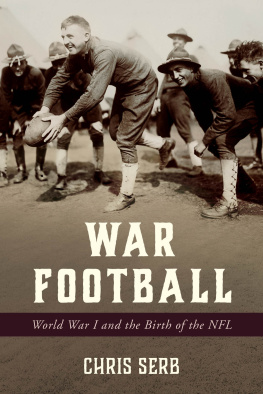

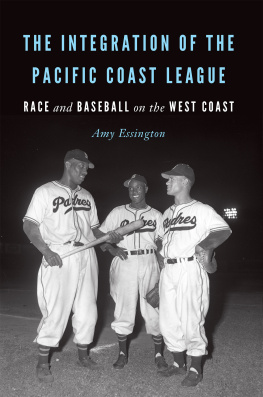

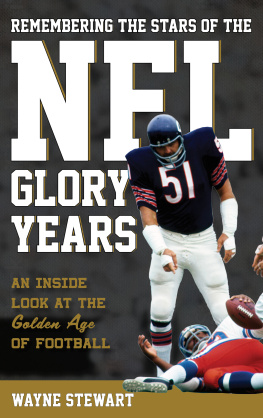

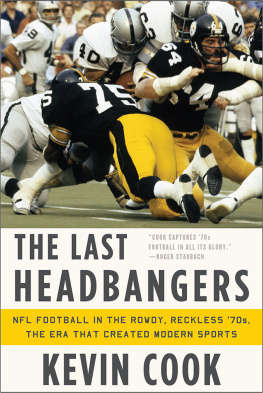
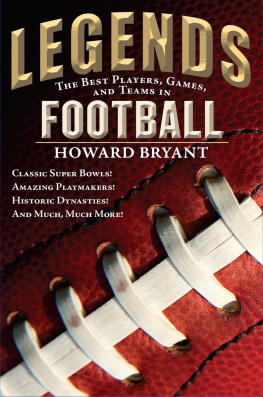
![National Football League. - Men of Sunday: [how faith guides the players, coaches, and wives of the NFL]](/uploads/posts/book/165636/thumbs/national-football-league-men-of-sunday-how.jpg)
